China Guardian Hong Kong Autumn Auctions 2020 bring US$ 15.8 million
Lot 54. Ju Ming (b.1938), Taichi Series: Cloud Hands, Stomp (Set of two pieces)(Executed in 1996 (left); executed in 1999 (right)). Bronze Sculpture Edition: 1/8 (left); 2/8 (right);左: 253 × 171.2 × 142 cm.;99 1/2 x 67 1/2 x 55 7/8 in. ;右: 203 × 180.3 × 127.5 cm.;80 x 71 x 50 1/4 in. Signed in Chinese, dated and numbered on each bottom of backside. Sold for: HK$ 11,190,000/ US$ 1,434,615. © 2020 China Guardian (HK) Auctions Co., Ltd
HONG KONG.- The sale of Fine Chinese Paintings and Calligraphy performed steadily, bringing in a total of HK$ 123 million/ US$ 15.8 million with an exceptional sell-through rate of 91%. The sale received heated competitions from 4 bidding channels, a number of lots were competed for multiple times exceed its estimate. Collectors from Mainland China and overseas were actively bidding on Live Auction Platform, result in a third of lots offered in the sale were sold to online bidders.
The 8 special sections and collections, including lots offered by Chung Chen Sun Private Collection, Wang Xiuling Private Collection and Important Private Collection From North America were 100% sold; Wu Qi Lou Collection achieved great results with 90% sell-through rate.
Yu Fei'an's Bird and Flower was the first lot sold for more than one million Hong Kong dollars after intense bidding war. It was sold for HK$ 1.29 million/ US$ 165,384 after 35 bids, 10 times its estimate. Pu Ru's Scholar Viewing Plum Blossoms and Qi Gong's Couplet in Running Script were both sold 10 times over their estimates. The highlight of the sale, Qi Baishi's Flowers in Four Screens, received much attention with heated competition between bidders in the room and on the phone, achieving a final price of HK$ 9.12 million / US$ 1.17 million. Another highlight worth mentioning is Fu Baoshi's Climbing the Lofty Mountain, which also received heated competition from bidders in Beijing and Hong Kong, which sold for HK$ 5.66 million / US$ 726,154. Cover lot Xie Zhiliu’s Wang Huizhi Admiring Bamboo and back cover lot Xu Beihong's Four Characters Couplet in Running Script performed within expectations, both sold for HK$ 1.42 million/ US$ 181,538.
Lot 1173. Qi Baishi (1864-1957), Flowers in Four Screens. Mounted for framing; ink and colour on paper, 96 x 42.5 cm. 37 3/4 x 16 3/4 in. Signed Baishi, with five artist seal. Sold for: HK$ 9,120,000/ US$ 1,169,231. © 2020 China Guardian (HK) Auctions Co., Ltd.
Lot 1063. Fu Baoshi (1904-1965), Climbing the Lofty Mountain. Hanging scroll; ink and colour on paper, 109 x 60.5 cm. 42 7/8 x 23 7/8 in. Signed Fu Baoshi, dated guimao 1963, with two artist seals. Sold for HK$ 5,664,000/ US$ 726,154. © 2020 China Guardian (HK) Auctions Co., Ltd.
Lot 1057. Xie Zhiliu (1910-1997), Wang Huizhi Admiring Bamboo, Hanging scroll; ink on paper, 83 x 87 cm. 32 5/8 x 34 1/4 in. Signed Zhiliu, with two artist seals and one collector seal. Sold for HK$ 1.42 million/ US$ 181,538. © 2020 China Guardian (HK) Auctions Co., Ltd.
Apart from the top highlights, other lots with no reserve performed well. Calligraphys by Xu Bangda, Xu Bojiao attracted absentee bids and bidders in the room, on the phone and online, sold for HK$ 295,000 after 54 bids.
Ms. Hu Yanyan, President of China Guardian (HK) Auctions Co., Ltd., says, “China Guardian (Hong Kong) team comprising just over 30 staff members, have single-handedly managed the Autumn Auctions without the support of the Beijing team, auctioneers and collectors visiting previews and auctions under these challenging times……The Autumn Auctions achieved a total of HK$ 361 million/ US$ 46.28 million, high sell-through rates average 75%. I am pleased and encouraged by the results. Passionate collectors, attractively priced quality artworks, professional and accommodating specialists, brand new live streaming technology connecting Beijing and Hong Kong customers to participating in bidding simultaneously, Live Auction Platform, and our highly praised auctioneers have altogether made this Autumn Auctions very memorable. We would like to sincerely thank our collectors from all around the world; your trust and support have always driven us to do better in the future.”
Asian 20th Century and Contemporary Art
The sale of Asian 20th Century and Contemporary Art achieved a total of HK$ 123 million/ US$ 1.58 million, with a remarkable 80% sold by lots, setting three new world auction records. Bringing a strong start was Super Mousy by No2good, with bidders furiously completed for 32 bids to a final total of HK$ 295,000 / US$ 37,821, 5 times its presale estimate, setting a world auction record for the artist. Zao Wou-ki’s 12.05.60 has also set the 4th highest per unit price achieved of his 1960’s work.
Lot 85. Zao Wou-ki, 12.05.60 (Painted in 1960). Oil on canvas, 24 x 33 cm. 9 1/2 x 12 1/2 in. Signed in Chinese and English on bottom right; signed in English and dated on the reverse. Sold for: HK$ 4,956,000/ US$ 635,384. *The 4th highest per unit price of Zao’s work in the 1960s*. © 2020 China Guardian (HK) Auctions Co., Ltd.
Provenance: Acquired directly from the artist by original collector
3 Oct 2017, Christie's London Autumn Auction, Lot 73
Important Private Collection, Asia.
Note: This work will be included in the artist's forthcoming catalogue raisonné prepared by Françoise Marquet and Yann Hendgen (Vol. II) (Information provided by Foundation Zao Wou-Ki)
Whirling Lights, Gentle Brushwork, Boundless Scenes
'12.05.60' -- A Major Work by Zao Wou-Ki
Zao Wou-Ki was one of the first Chinese artists to achieve success and fame overseas. Moreover, his long-term involvement in the international art world ensured a close relationship between the creative language the artist employed and changes in mainstream western art over the past 50 years. In 1958, Zao signed a contract with Galerie de France, an influential Parisian art gallery, making him the only Asian painter represented by the gallery to date and establishing a foundation for him to become the first internationally renowned Western painting style Chinese artist. However, it was the Eastern traditions integral to Zao's artist's heritage that provided him with the cultural milieu needed to successfully expand his abstract works and be the “first person to introduce the world to the artistic conceptualization of Chinese painting.”
International Fame, Brilliant Pioneer
In the 1960s, Zao achieved the first peak in his artistic career. It was in this period that he incorporated a more diverse range of cultural elements into his work, developing brushwork that embraced abstract lines, sculpture, calligraphy and ink painting, representing a major leap forward in his art. In 1960, Zao had just finished a solo exhibition tour of the United States, Europe and Asia that had been an unprecedented success. From 1960-1965, he held solo exhibitions at Galerie de France and the Kootz Gallery in New York, with an increasing number of people paying attention to him in the Western-led art world. Art historians have highly praised Zao's paintings in this era, including renowned French art historian Pierre Schneider who said: “The works of Zao Wou-Ki in the 1960s had greater depth and richness of color than his earlier works, more ingeniously depicting his temperament and special nature.” Based on his tireless exploration of abstract art, Zao gradually developed his own distinctive graphic structure and style, showcasing the close relationship between the vocabulary of the times and national sentiment in a way that was irresistible and officially launched the artist's “glorious '60s.”
In this period, Zao named his works after the day on which they were completed, thereby breaking with the limits imposed on painting content and interpretation by more traditional titles. These days, when any of the artist's works from the 1960s appear on the market they attract huge interest and have continued to set new sales records. In this context, 12.05.60, which was completed in 1960, is an important work that marked the beginning of a new and brilliant art world.
A Meticulously Constructed and Boundless Universe
In 12.05.60, Zao Wou-Ki combines Eastern calligraphy and abstract language while also moving from graphic to spatial expression. As such, it is often said that his creative process represents an artistic focal point imbued with the Zeitgeist of the times. The interplay of green and yellow imbues the work with a sense of tranquility and vitality, almost as if the artist binds the colors and light tightly together. At the center of the painting, the symbols Zao used in his earlier works are transformed into layers of curled, brisk, densely packed lines, crafting a unique visual expression that echoes “the complementarity of black and white.” The rough and densely packed black and yellow lines break through the smooth undercoat, while maintaining a close dominant-subordinate relationship with it. This ensures the work not only has a strong “painted nature” but also a powerful cohesiveness in the abstract context of impermanent change. Zao noted: “Once there is a whole, then I seek out change.” The overlapping strokes are imbued with the image appeal of the artist's friend Alberto Giacometti, revealing the spiritual considerations behind the world of representation, as the fine and sharp brushwork gives form to imagined things and then crashes them together. The artist focuses on these ideas magnifying their definition like a photographer and this creates a visual center to the piece that is simultaneously antagonistic and balanced, as he constructs his own exquisite “universe.”
Images Built on Spirit – Perfect Abstract Poetry
Discussing his artistic works from the 1960s, Zao Wou-Ki said: “At that time there were already no technical barriers, I was able to follow my heart and paint freely. But I always had to wrack my brains when it came to spatial expression – I gave myself completely to the work, not to fill it up but to breathe life into it.” Moreover, it is exactly this highlighting of Eastern elements, beyond avant-garde abstract concepts, that imbue Zao's works with an energy that is independent from and superior to the abstract paintings of his Western peers.
In 1959, Zao Wou-Ki bought an old warehouse in Paris and installed windows only in the roof so the natural light cascaded downwards onto the center of his painting studio, an arrangement that brought to mind the infinite meaning of ink and blank space in Chinese landscape scroll paintings. The idea was to enhance the spatial isolation and thereby stimulate Zao's boundless creative inspiration. In the central area of 12.05.60 the gradual change in combinations of green, yellow and black line hues and color scale, creates visual spatial depth in the two dimensional construct. At the same time, the change in the thickness of lines is akin to that of Chinese calligraphy, creating a surging kinetic energy of accumulated inner sentiment and flow of time. The saturated of yellow lines pass back and forth randomly through the overlapping brushstrokes in the dark colors, reflecting the glittering splendor as they continually contract and expand like a beating heart emitting powerful spiritual energy. The alternating yellow and green colors create a landscape concept reminiscent of a mountain forest on an autumn day that reveals a boundless purity. In addition, the “accumulated” brush strokes at the center of the work are like traditional “Po Bi” and “Sui Bi” calligraphic strokes, free and easy in a way that weakens the solidity of line drawing depictions while also imbuing the texture of the painting with vitality and changeability. In concert with the brushwork that informs the exuberant bright yellows and greens, this highlights the inner life energy of the colors themselves.
The special themed section FACES in the Era achieved outstanding results; Ju Ming's sculpture Taichi Series: Cloud Hands, Stomp (Set of two pieces), after competition between Beijing and Hong Kong bidders, it was sold to client of Ms. Hu Yanyan, President of China Guardian (HK) for HK$ 11.19 million/ US$ 1.43 million, making it one of the highest sold lots in Autumn Auctions 2020. Zeng Fanzhi's Untitled achieved robust result, which sold for HK$ 9.24 million/ US$ 1.18 million. Four bidders in the room and on the phone pursued Yayoi Kusama's On the Ocean; the work sold 2 times above its estimate for HK$ 6.48 million/ US$ 830,128. Yashitomo Nara's Abandoned Puppy, Waiting (Diptych) sold for HK$ 4.84 million/ US$ 621,025, 2 times its estimate. Two other important lots of Sanyu’s paper work Reclining Woman in Green Robe and Seated Women in Green Robe, sold for HK$ 4.25 million/ US$ 544,615 (4 times its presale estimate) and HK$ 2.48 million/ US$ 317,692 (2.7 times its presale estimate) respectively, making them the 2nd and 5th highest price of the artist's watercolor paintings. Additionally, Chao Chung-Hsiang's Mother's Birthday received 26 bids, sold for HK$ 1 million/ US$ 128,590, 3 times its estimate. In the Shining Stars section, works offered by 9 artists were 100% sold. Zhao Zhao's Constellations in particular sold for HK$ 967,600/ US$ 124,051, setting a world auction record for the artist; another world auction record was taken by Liang Jen-Hung, his work Transevolution 23AT1033-34 was sold for HK$ 613,000/ US$ 78,590.
Lot 54. Ju Ming (b.1938), Taichi Series: Cloud Hands, Stomp (Set of two pieces)(Executed in 1996 (left); executed in 1999 (right)). Bronze Sculpture Edition: 1/8 (left); 2/8 (right);左: 253 × 171.2 × 142 cm.;99 1/2 x 67 1/2 x 55 7/8 in. ;右: 203 × 180.3 × 127.5 cm.;80 x 71 x 50 1/4 in. Signed in Chinese, dated and numbered on each bottom of backside. Sold for: HK$ 11,190,000/ US$ 1,434,615. © 2020 China Guardian (HK) Auctions Co., Ltd
Provenance: Private Collection, Europe
23 Nov 2013, Christie's Hong Kong Autumn Auction, Lot 42
Important Private Collection, Asia.
This work is accompanied by a certification of authenticity issued by Nonprofit Organization Juming Culture and Education Foundation
Sky Rocking and Groundbreaking, to the Realm of Infinity
Ju Ming's Dual Sculpture Ever Presented in Auction History
“When my hands move with my heart, I completely forget myself, no burden, no boundaries. The real me emerges and my potentials are naturally revealed”
——Ju Ming
Zhuang Zi said: “The spirit of Tao is before Taichi….” The term Taichi originally refers to the state of infinite space. Later, The Book of Changes has defined Taichi as the initial stage of all things. From Taichi comes the two elements, hence Yin and Yang, and the intertwined relationship between the dynamic and the static. Based on his own experience learning the martial art of Taichi, the progression from a single move to a two-person confrontation and interaction, Ju Ming has internalized the spirit of infinite and abundance in his own bronze sculptures.
Coveted Collections: Unprecedented in Stature
With the improvement of bronze remolding technology, Ju Ming has gradually expanded his creative apparatus in terms of scale. From the 1980s to the mid1990s, he held solo exhibitions in New York Max Hutchinson's Sculpture Fields, Hong Kong Exchange Square, Yorkshire Sculpture Park, and Hakone Sculpture Open Air Museum in Japan. All the works in the exhibitions were grand in stature and have demonstrated tremendous confidence of the artist, which has made Ju Ming an important figure in the Chinese art history.
We are honored to present the masterpiece of Ju Ming's classic two person sets in Taichi, Taichi Series: Cloud Hands, Stomp, the largest bronze sculptures in auction history. These sculptures are a crystallization of Ju Ming's elaborate explanation of the Taichi principles and an embodiment of the artist's ambition to influence the world with his artworks. If placed in an outdoor setting, viewers will be able to perceive the staggering height (253 cm) of the Cloud Hands on the left, as if a Taichi master was integrated into the universe. The Stomp piece on the right (203 cm), further explores the majestic power of the dynamic balance, combining the thick materiality of bronze with the rhythm of the stature.
Although Ju Ming has created a large collection of artworks, there are only a few large size bronze sculptures, and even fewer went to auction. Ju only has 12 pieces that are over 250 cm in height and the two-person fighting set is a rare theme. Ju's largest two person fighting set sculpture (270 cm) was exhibited in his solo exhibition at the Hakone Open Air Museum in Japan. The Taichi Series: Stomp is arguably Ju Ming's second largest bronze sculpture and it is a rare and exquisite pair of pieces.
The Shape of Taichi: Generative Power of Penetration
“Ju Ming does not just mold, but engraves his bronze sculptures. He is more interested in creating texture and employing boneless method to express the materiality of mountain.”
——Johnson Chang
This work highlights the aesthetics of Ju Ming's sculpture in large stature, and his engraving skill has morphed into the brushstrokes and the rhythm of boneless painting method, which embodies the Taichi's energy and spirit. The shape of Cloud Hands is concise: the straight cuts of the legs form four squares and the cliff-like lines are straight down. Both have demonstrated his mastery of engraving skills. The cloud hands posture is rich in overlapping lines: the left arm delivers steady strength in a straight line and the right arm intersects with multiple triangles and irregular blocks, adding a sense of liveliness, exhibiting the lightness, heaviness, slowness and swiftness of calligraphy skillfulness and the hidden potential underneath the calm appearance.
Taichi Series: Stomp reveals the dual strength of calmness and vigor. Viewing from the front, the audience can see the bright lines and the lively posture. Ju Ming has done a marvelous job capturing the moment of attack from the kick. The protagonist stands on the right foot alone, keeping a straight line from the head to the body and the leg. Driven by the body to swing and kick, the left leg is full of momentum and energy. The two hands form superb harmony in the moving dynamic: the right hand hangs down to maintain balance, and the left hand swings naturally to the center to connect the whole body. The straight and neat lines echo the lower body that is as steady as Mountain Tai, consolidating the dynamics into the moment. Viewing from behind, the audience will discover that the stability and the calmness of the figure builds on speed and power. Different from the mellowness of Cloud Hands, Stomp consists of an arched pattern with twists and turns of lines, a pair of master pieces of unforgettable momentum of strength.
Form into the Spirit: the Aura of a Master
In the form of two-person confrontation, the sculptures form a moving-static momentum of Taichi martial art. Stomp is after speed and attacking. Cloud Hands strikes a balance between slowness and swiftness, calmness with movement, which harmonizes the body. When the two are juxtaposed, the viewers are able to appreciate the dynamics and the statics, rigidity in softness. The undulating line and surfaces are both distinctive relativities and harmonious symbiosis, which fits into Taichi's profound exposition on dualism. Although large in scale, the artist confidently works with the magnificent form, making a pair of moving pieces of artwork, molding the sculptural language of image into spirit. It is a crystallization of Ju Ming's Taichi wisdom and artistic talent, a pair of rare and exquisite pieces.
Lot 90. Zeng Fanzhi (b.1964), Untitled (Painted in 2012). Oil on canvas, 330 x 215 cm. 129 7/8 x 84 5/8 in. Signed in Chinese and dated on bottom right. Sold for: HK$ 9,235,000/ US$ 1,183,974. © 2020 China Guardian (HK) Auctions Co., Ltd
Provenance: Gagosian Gallery, London
Important Private Collection, Europe
Important Private Collection, Asia.
Note: Two exhibition labels from Gagosian Gallery London and Musée d'Art Moderne de la Ville are affixed on the reverse
This work is registered in the Archive of Zeng Fanzhi Arts and Education Foundation, and will be included in the forthcoming Zeng Fanzhi Catalogue Raisonné (Information Provided by Zeng Fanzhi Arts and Education Foundation)
Looking up at the Starry Sky, Confident in His Own Creativity
The First 'Snowscape' Work by Zeng Fanzhi on Auction
“Only when the mind is no hindrance can I paint.”
—— Zeng Fanzhi
In 2013, Musée d'Art Moderne de la Ville de Paris held a large retrospective exhibition for Zeng Fanzhi, the first Chinese artist to hold a solo exhibition in this bastion of Western art in 100 years, an indication of the respect with which Zeng is viewed internationally. In 2019, three of the words top art galleries -- Gagosian Gallery, Hauser & Wirth Gallery and Shanghart Gallery -- made the unprecedented announcement that they would jointly represent the artist, emphasizing the influence of Zeng Fanzhi in the world of modern art. From the surprising Hospital series of works in the early 1990s to the Mask series in 1994, Zeng's richly diverse creations have fascinated the world. On the eve of the New Millennium the artist started to research Chinese art from the Tang and Song dynasties (618-1279). These studies influenced Zeng and his works became more abstract in nature, with particular focus on exploring line expressiveness and flow, resulting in the extraordinary Chaotic Brush series. At the current autumn auction Untitled is one of the artist's more mature works and was previously shown as part of the Chaotic Brush series at the Musée d'Art Moderne de la Ville de Paris.
Largest and First 'Snowscape' Work
A review of Zeng Fanzhi's 2004 Chaotic Brush series shows that he has produced only three snowscape works in his career and the auctioned work is both the first and largest such painting. As such, it clearly represents an important change in the artist's mindset at that time. Zeng was born in Wuhan and before moving to Beijing snowy scenes were extremely rare events in his life, a rarity that made such memories all the more precious. In Untitled, the snow reflects the morning glow as it flies through the air and falls to Earth, the vivid snowy white, pink and purple surrealist colors coming from the romantic imaginings of memory. However, this seemingly unified color spectrum contains within it all kinds of changes and subtle layering. For example, although Zeng's focus is the dark night in the moment before dawn, the vigorous and strong chaotic lines span everything the viewer sees and the signs of daybreak in the distance are a secret and unknowable territory. From within the dark deep night a rose red hue radiates like the cheek of a young girl, the smudged purple night ensuring the boundless land exudes hope hidden in the darkness of night. The snowdrops fall to the ground as if in a crescendo, decorating the endless night sky in the moments before dawn and viewers can imagine the multicolored spring sludge that follows. The marks of the oil colors naturally drip and run down, bringing to mind the wild lines of Western abstract master Jackson Pollock, starting with the heart so the lines move unconsciously, retaining the random and independent nature with which they were created. As the oil color drops of flying snow gradually concentrate we can almost discern the movements of the artist completely immersed in the painting process. Zeng's brushwork has great power and range and his use of color is ordered and simple, infusing the work with the aesthetic elements of a Chinese literati painter, so viewers are instantly able to appreciate its deep meaning.
A Decade of 'Chaotic Strokes,' Painting Transcendent Scenes
'Yi' style abstract brush strokes speak to the free spirit in the human heart
—— Ni Yunlin (1301-1374), Yuan Dynasty painter and calligrapher
In the decade from the Chaotic Brush series in 2002 to Untitled in 2012, Zeng Fanzhi was already a renowned artist. The initial inspiration for the series came from a garden attached to the artist' studio, a place that gradually became somewhere Zeng went to realize his landscape ideas. In this period, he researched classical garden art and as a result got closer to the various forms and colors of traditional Chinese culture. Through the honing and molding of branches the artist gradually attained perfection and this “garden aesthetic” was reflected in his work as he started to express a traditional Chinese aesthetic view. Although Untitled is a chaotic brushwork painting, on closer inspection there is a hidden order and rhythm to the confused lines, and we can also make out the artistic conception of a Chinese garden. In terms of brushwork Zeng's approach to painting involves not only the movement of the wrist and arm, but the whole body. Based on photographs of the studio it is clear that when Zeng Fanzhi creates art he tends to use a flat tip brush to express horizontal and angular lines or to define the outline of the sky and earth. Thereafter, he employs a finer painting brush for overlapping horizontal and vertical lines, a process akin to the boundless stretching nature of cursive lines. In Untitled, the calligraphic-like lines go from dense and concentrated to sparse, scattered and hidden in the night sky. The branches and old rattan are similar to the pictorial nature of Song Dynasty Cold Forest Old Trees, though the more relaxed structure represents a movement away from the pressure of the twisted roots and gnarled branches in earlier Chaotic Brush series works. The ethereal and transcendent spirit of the painting is imbued with vibrant desire.
Tang and Song Landscapes, Exuding Self Confidence
In Untitled, the artist extends the concept of Chinese painting. Sui and Tang painting were influenced by popular murals at the time and attached great importance to the narrative nature of a work, as well as the use of color and lines to convey weight or volume. In contrast, Song Dynasty painting focused more on the ethereal beauty of a landscape and artistic conceptualization. Untitled is a combination of these two approaches, expressing the layering of distance and landscape depth within a vertical composition. For Example, in Facing the Moon by Song Dynasty artist Ma Yuan (1160-1225) the rising mist shrouds a cliff between two mountain peaks, one large one small, the “Yi” style abstract brushstrokes reflecting the same pink sunset glow as in Untitled; Moreover, Zeng's densely overlapping “chaotic strokes” can also be compared to Sailing Boats and a Riverside Mansion by Tang Dynasty painter Li Sixun (651-716). The closer scenery at the bottom of the painting is more detailed and the rattan is increasingly ethereal as it climbs upwards, creating a contrast between heaven and earth, ethereal and corporeal. In Untitled Zeng Fanzhi not only salutes the ingenious use of “cursive brushwork” by ancient artists, he also displays confidence in his own instinct and experience with oil colors, showcasing confidence and pride in his own artistic journey.
From Europe to Asia - Recorded Provenance
Shortly after Untitled was completed in 2012 it was part of the artist's first solo exhibition at the Gagosian Gallery in London, where it was collected by renowned European art collectors Mr. and Mrs. Joseph Schull, though it was loaned back and shown as part of a major exhibition by Zeng at the Musée d'Art Moderne de la Ville de Paris the following year. The Schulls are not only successful bankers and lawyers they are also important sponsors of Modern Art Oxford, the Contemporary Art Society and Southbank Art Center, London, and known for their impeccable taste in art circles across Europe, which speaks to the importance of the auctioned work. From London to Paris and Hong Kong, Untitled is a testament to a creative turning point in the work of Zeng Fanzhi, but it also reflects a more mature mindset in which the artist is more inward looking and focused on an inner dialogue. As we look at the painting, a corner of the soul makes its presence felt with the glow of early morning light, slowly lighting up the long night and the path traveled by the artist. As if walking down a pathway and looking up at the star-filled sky, Zeng takes off his “mask” and says goodbye to the past, as he walks home one snowy night.
Lot 43. Yayoi Kusama (b.1929), On the Ocean (Painted approximately in 1970s). Acrylic on canvas, 45.5 x 38 cm. 17 7/8 x 14 1/2 in.Titled in Japanese, signed in English on the reverse. Sold for: HK$ 6,475,000/ US$ 830,128. © 2020 China Guardian (HK) Auctions Co., Ltd
Works of Pang Jiun and Liao Chi-chun were sold with good results, two of Pang Jiun's most representative works The Champion's Palace in Spring and On a Little Boat, I Live My Life sold for HK$ 3.07 million/ US$ 393,333 and HK$ 4.01 million/ US$ 514,358 respectively.
Lot 125. Pang Jiun (b.1936), The Champion's Palace in Spring (Painted in 2020). Oil on canvas, 100 × 200 cm. 39 3/8 x 78 3/4 in. Signed in Chinese and dated on bottom left. Sold for: HK$ 3.07 million/ US$ 393,333. © 2020 China Guardian (HK) Auctions Co., Ltd
Lot 126. Pang Jiun (b.1936), On a Little Boat, I Live My Life (Painted in 2014). Oil on canvas, 90 x 180 cm. 35 3/8 x 70 7/8 in. Signed in Chinese and dated on bottom left. Sold for: HK$ million/ US$ 514,358. © 2020 China Guardian (HK) Auctions Co., Ltd
Ceramics and Works of Art
Fine Chinese Ceramics and Works of Art: Part I was well received during the first day at auction, with all eyes focused on the important lot A Rare and Large Blue and White 'Dragon' Charger, Yongzheng period. The lot received 39 bids, fetching HK$ 7.86 million/ US$ 1.01 million, 3 times its estimate. Followed by the sale of cover lot, A pair of Monumental Gilt-Decorated Wucai 'Longevity' Jardinieres, Kangxi period with bidders from two destinations competed fiercely for 29 times, achieving HK$ 6.13 million/ US$ 785,897, 3 times its estimate.
Lot 414. A Rare and Large Blue and White ‘Dragon’ Charger, Yongzheng Period (1723-1735); 51 cm. (20 1/8 in.) diam. Sold for: HK$ 7,855,000/ US$ 1,007,051. © 2020 China Guardian (HK) Auctions Co., Ltd
Provenance: Sotheby’s Hong Kong, 15 November 1983, lot 241
Sotheby’s Hong Kong, 3 April 2018, lot 3202
An important overseas private collection.
Lot 321. A Pair of Monumental Gilt-Decorated Wucai ‘Longevity’ Jardinieres, Kangxi Period (1662-1722); 60.5 cm. (23 7/8 in.) diam. Sold for: HK$ 6,130,000/ US$ 785,897. © 2020 China Guardian (HK) Auctions Co., Ltd
Provenance: Tang Shaoyi (1862-1938) Collection, first premier of the Republic of China, 1912.
Lot 428. A Superb and Rare Blue and White ‘Boys’ Bowl, Chenghua Period (1464-1487); 22.5 cm. (8 7/8 in.) diam. Sold for: HK$ 5,900,000/ US$ 756,410. © 2020 China Guardian (HK) Auctions Co., Ltd.
Provenance: Sotheby's London, 23 May 1972, lot 127
Sotheby's Hong Kong, 31 October 1974, lot 69
Sotheby's Hong Kong, 14 November 1989, lot 25
An important overseas private collection.
Literature: S.T. Yeo and Jean Martin, Chinese Blue and White Ceramics, Singapore, 1978, col.fig.28.
Exhibited: Exhibition of Ancient Chinese Ceramics from the Collection of the Kau Chi Society of Chinese Art, The Chinese University of Hong Kong, Hong Kong, 1981, cat.no.71.
Masterpieces of Ancient Chinese Jades: The Ju-yi Scholar's Studio Collection sale totaled nearly HK$ 50 million/ US$ 6.38 million far exceeded its estimate (HK$18.7 million/ US$ 2.4 million) with a high sell-through rate of 92%. The sale offered a total of 179 lots of ancient Chinese jades from an important Taiwanese collector, the owner of The Ju-yi Scholar's Studio. The sale presented treasures spanning from the Neolithic period to the Ming and the Qing dynasties that she collected for 4 decades; many of which were exhibited at National Museum of History, Taipei and published in Masterpieces of Ancient Chinese Jades: The Ju-yi Scholar's Studio Collection. Some important lots from the Ming and the Qing dynasties were exhibited in the U.S., which also published in Jade: Ch'ing Dynasty Treasures. This collection had never appeared at auction, thus, it brought the outstanding results.
Leading the sale was A white Jade Bird-shaped Pendant, bidding from conservative estimate of HK$ 100,000 / US$ 12,821 to a final price of HK$ 1.53 million/ US$ 196,667, 12 times of its estimate. The most eye-catching lot was A Pale Celadon Jade Parrot, which received 26 bids in the room and on the phone from Beijing and Hong Kong, finally sold for HK$ 4.37 million / US$ 559,744, 12 times its estimate (HK$ 300,000). Another worth mentioning lot is A Celadon Jade Pig; was sold after 33 bids for HK$ 2.71 million / US$ 347,949, 7.7 times its estimate.
Lot 466. White Jade Bird-shaped Pendant, Warring States Period (475-221 BC); 3.4cm. Sold for HK$ 1.53 million/ US$ 196,667, 12 times of its estimate. © 2020 China Guardian (HK) Auctions Co., Ltd.
Provenance: The Ju-yi Scholar’s Studio collection, Taipei, acquired prior to 1993.
Literature: National Museum of History, Jade: Collection of the Ju-yi Scholar’s Studio, 2000, no.103.
Exhibited: National Museum of History, Jade: Collection of the Ju-yi Scholar’s Studio, 26 May-25 June 2000.
Lot 478. A Pale Celadon Jade Parrot, Warring States Period (475-221 BC), 2.6cm. Sold for HK$ 4.37 million / US$ 559,744, 12 times its estimate. © 2020 China Guardian (HK) Auctions Co., Ltd.
Provenance: The Ju-yi Scholar’s Studio collection, Taipei, acquired prior to 1993.
Literature: National Museum of History, Jade: Collection of the Ju-yi Scholar’s Studio, 2000, no.105.
Exhibited: National Museum of History, Jade: Collection of the Ju-yi Scholar’s Studio, 26 May-25 June 2000.
Lot 473. A Pale Celadon Jade Pig, Warring States Period (475-221 BC), 1.5cm. Sold for HK$ 2.71 million / US$ 347,949, 7.7 times its estimate. © 2020 China Guardian (HK) Auctions Co., Ltd.
Provenance: The Ju-yi Scholar’s Studio collection, Taipei, acquired prior to 1999.
Literature: National Museum of History, Jade: Collection of the Ju-yi Scholar’s Studio, 2000, no.104.
Exhibited: National Museum of History, Jade: Collection of the Ju-yi Scholar’s Studio, 26 May-25 June 2000.
The Autumn Auctions 2020 ended lavishly with Fine Chinese Ceramics and Works of Art: Part II with The Property of Jiu Ru Yuan received 90% sell-through rate. An Archaic Yellow Jade 'Dragon' Tubular Bead received intense competition, it sold after 48 bids for HK$ 2.24 million / US$ 287,436, 74 times of its estimate, the first lot reached over a million. Another top lot An Archaic Jade Cong sold to an important collector for HK$ 2.6 million / US$ 332,821.
Lot 645. An Archaic Yellow Jade 'Dragon' Tubular Bead, Neolithic Period, C.4th-3rd Millenium BC; 3.1 cm. (1 1/4 in.) wide. Sold for HK$ 2.24 million / US$ 287,436, 74 times of its estimate. © 2020 China Guardian (HK) Auctions Co., Ltd.
Provenance: Jiu Ru Yuan collection, acquired in the 1980s.
Lot 682. An Archaic Jade Cong, Neolithic Period, C.4th-3rd Millenium BC; 20.8 cm. (8 1/4 in.) high. Sold for HK$ 2.6 million / US$ 332,821. © 2020 China Guardian (HK) Auctions Co., Ltd.
Provenance: An important Taiwanese private collection, acquired in the 1980s.
An Inscribed Archaic Bronze Ritual Vessel, Fangding received heated competition, which sold for HK$ 11.19 million / US$ 1.43 million, together with Taichi Series: Cloud Hands, Stomp were both the most expensive lots sold in the auction.
Lot 880. An Inscribed Archaic Bronze Ritual Vessel, Fangding, Late Shang Dynasty; 22 cm. (8 5/8 in.) high. Sold for HK$ 11,190,000/ US$ 1,434,615. © 2020 China Guardian (HK) Auctions Co., Ltd.
Provenance: Henri E. Hoppenot (1891-1977), French ambassador to China, living in Beijing from 1933 to 1937, and thence by descent within the family
Acquired by Parisian author and collector Michel Beurdeley (1911-2012) in 1978.
Literature: Daisy Lion-Goldschmidt, Chinese Art: Bronze, Jade, Sculpture, Ceramics, New York, 1960, pp.38-39.
Classical Chinese Furniture
The sale of Classic Furniture of The Ming and The Qing Dynasties brought a strong sell-through rate of 86%. The Huanghuali furniture achieved extraordinary results, with the top lot Huanghuali Square Table with Drawers, Early Qing Period, was sold for HK$ 1.42 million/ US$ 181,538. The second top lot of the sale, Huanghuali Recessed-Leg Painting Table, Early Qing Period, sold for HK$1.3 million/ US$166,410. Huanghuali Waisted Kang-table with Cabriole-Leg, Early Qing Period, received 29 bids with bidders from Beijing and Hong Kong battled on the phone, in the room and it was eventually sold to a Hong Kong collector for 5 times its estimate.
Lot 201. A Huanghuali Square Table with Drawers, Early Qing Period; 82.5×82.5×84.5 cm (32 1/2×32 1/2×33 1/4 in). Sold for HK$ 1,416,000/ US$ 181,538. © 2020 China Guardian (HK) Auctions Co., Ltd.
Lot 200. A Huanghuali Recessed-Leg Painting Table, Early Qing Period;144.5×69.5×84 cm (56 7/8×27 3/8×33 in). Sold for HK$1.3 million/ US$166,410. © 2020 China Guardian (HK) Auctions Co., Ltd.
Lot 191. Pair of Huanghuali waistless square stools, Early Qing Period;59.5×59.5×52 cm (23 3/8×23 3/8×20 1/2 in) ×2. Sold for HK$944,000. © 2020 China Guardian (HK) Auctions Co., Ltd.

/https%3A%2F%2Fprofilepics.canalblog.com%2Fprofilepics%2F1%2F0%2F100183.jpg)
/https%3A%2F%2Fstorage.canalblog.com%2F03%2F02%2F119589%2F96711876_o.jpg)
/https%3A%2F%2Fstorage.canalblog.com%2F11%2F31%2F119589%2F94773502_o.jpg)
/https%3A%2F%2Fstorage.canalblog.com%2F20%2F83%2F119589%2F94772815_o.jpg)
/https%3A%2F%2Fstorage.canalblog.com%2F26%2F72%2F119589%2F75604929_o.jpg)
/https%3A%2F%2Fstorage.canalblog.com%2F59%2F60%2F119589%2F26458628_o.jpg)

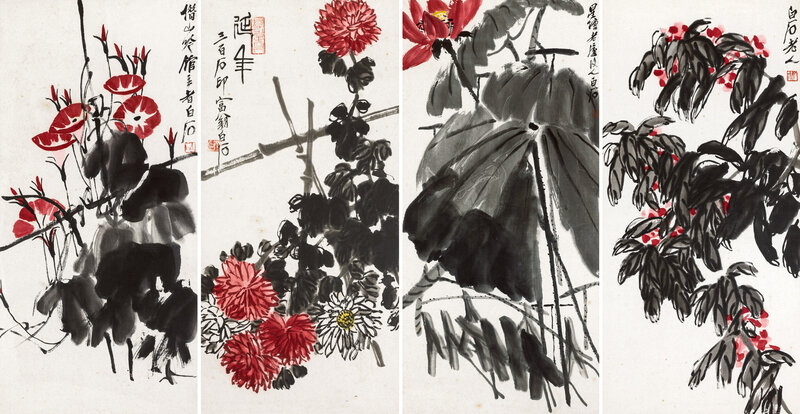






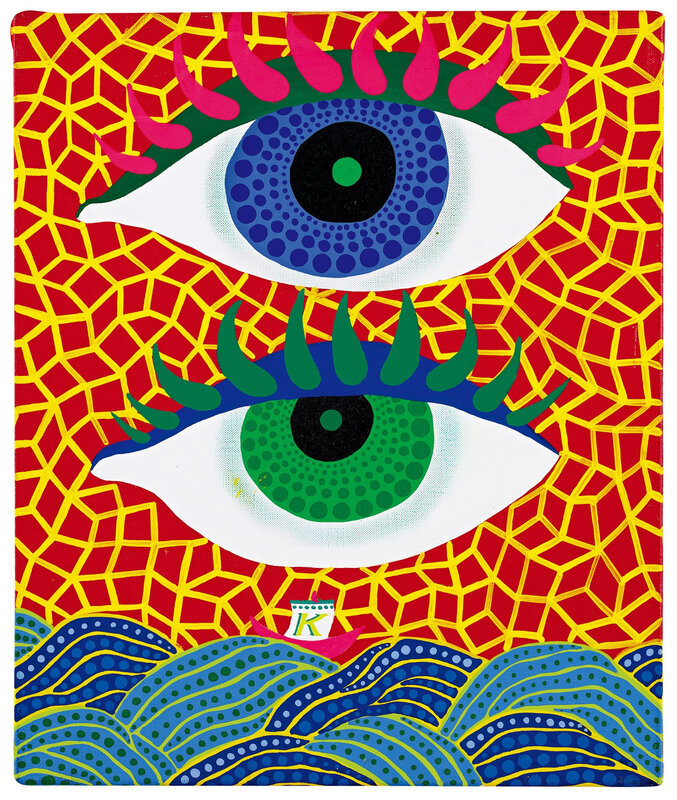
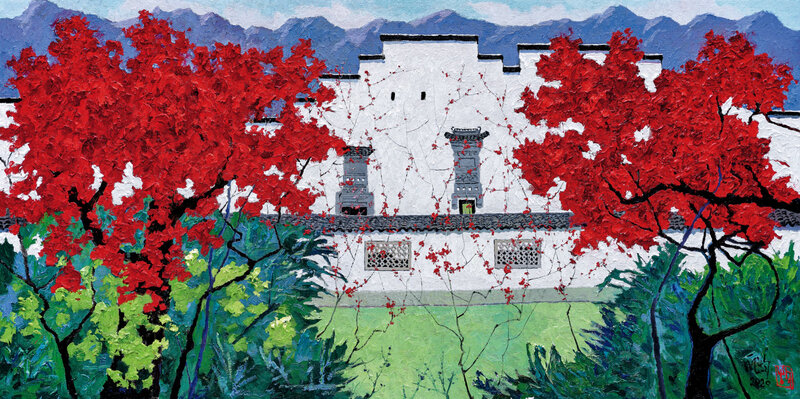
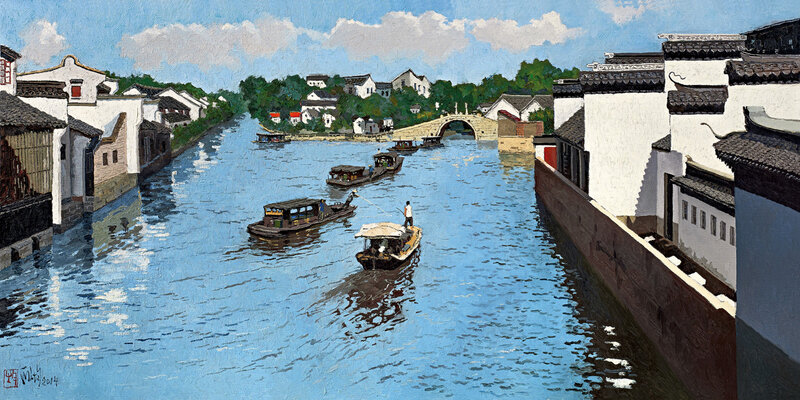



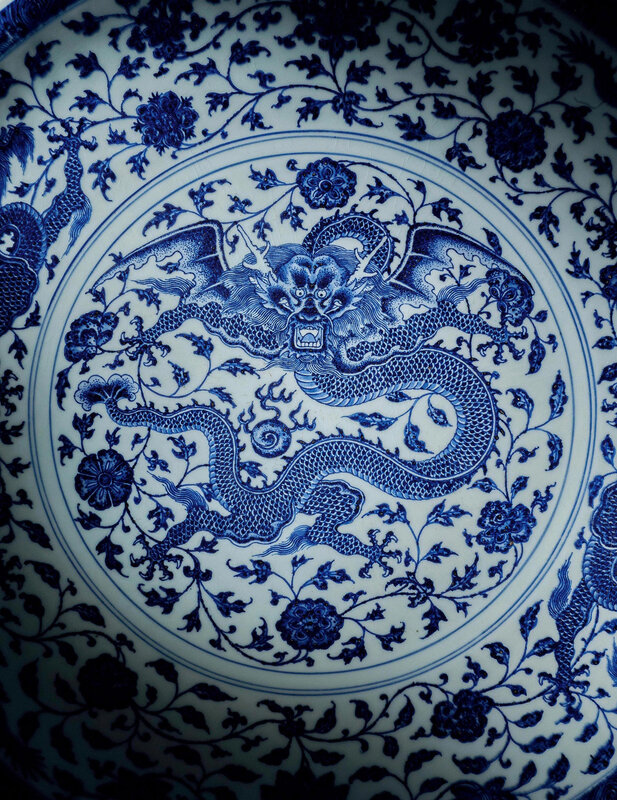






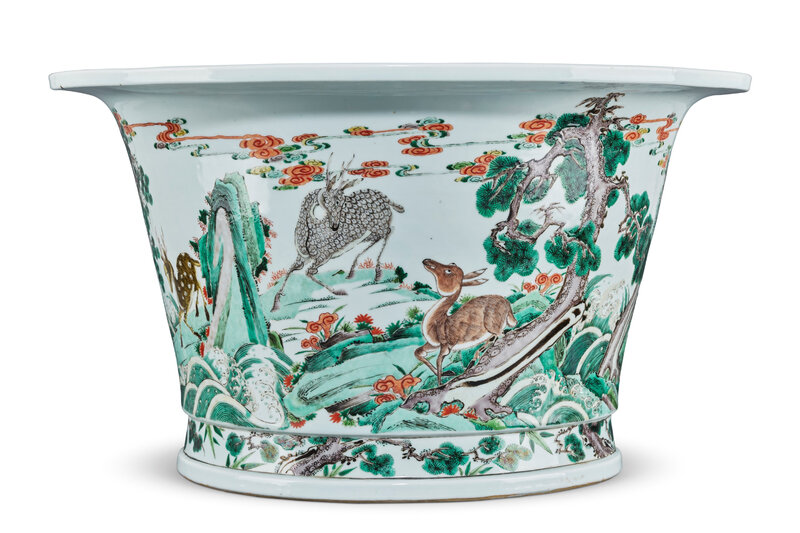

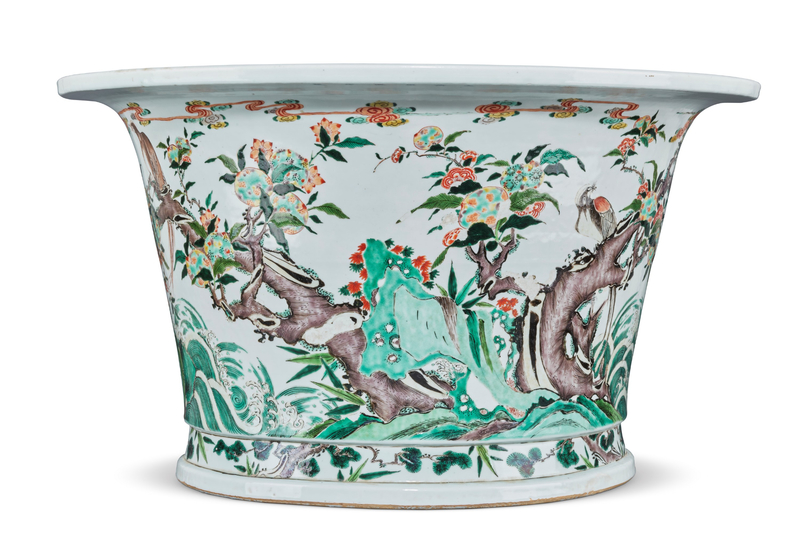





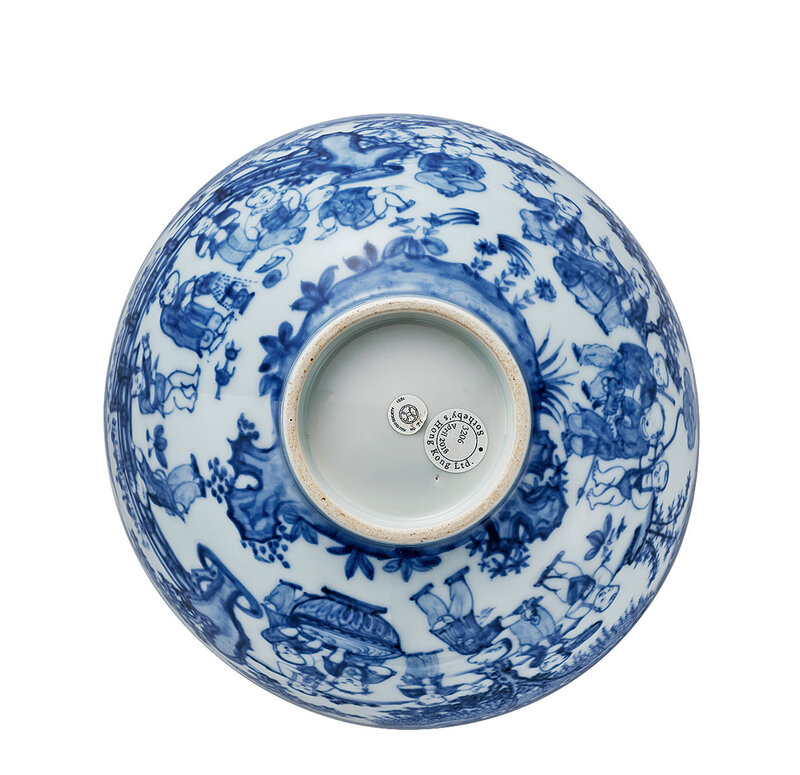


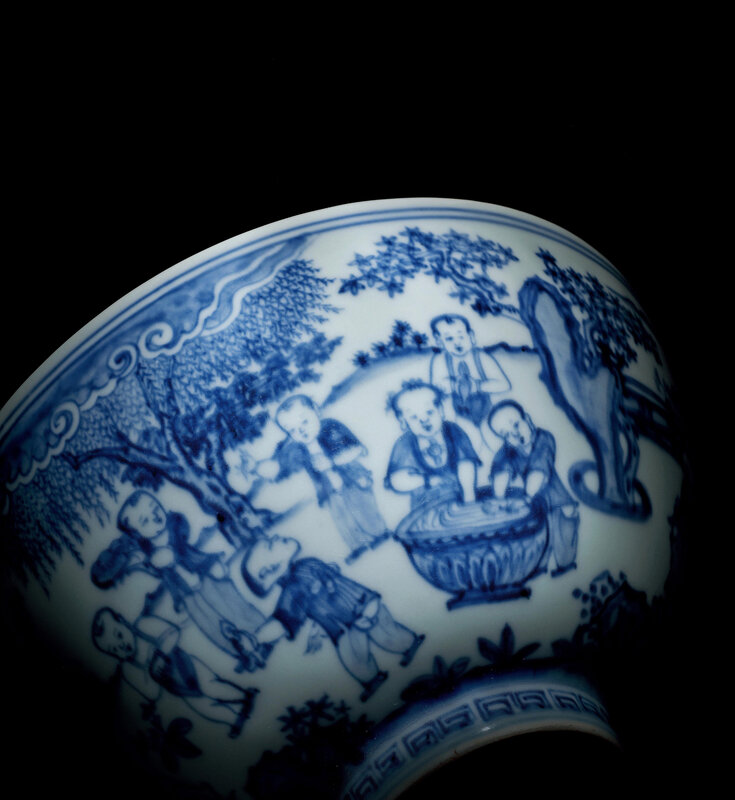




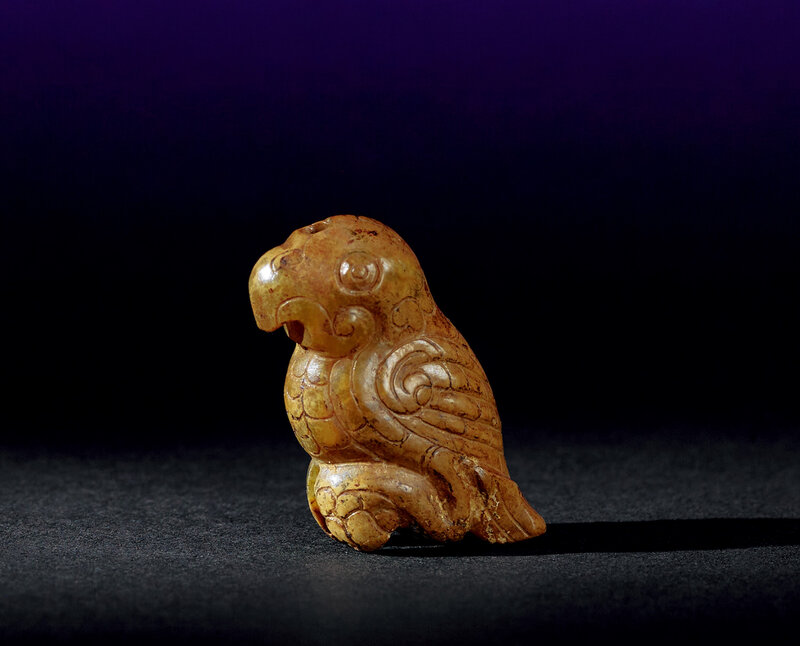










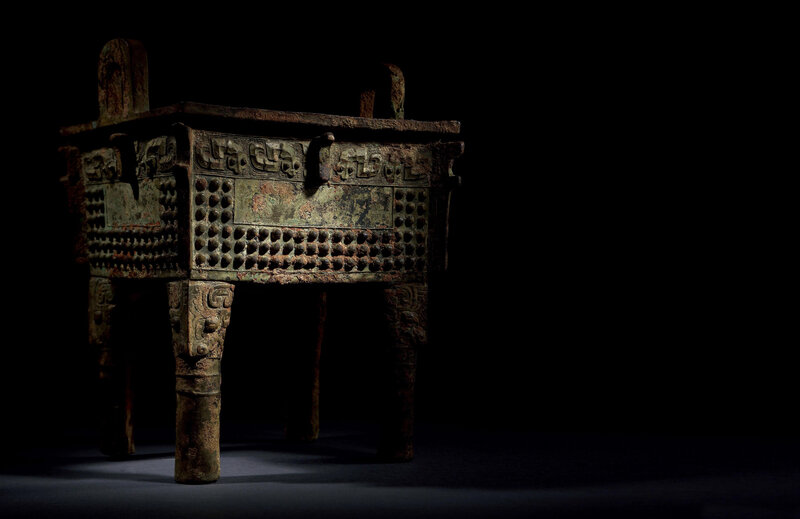


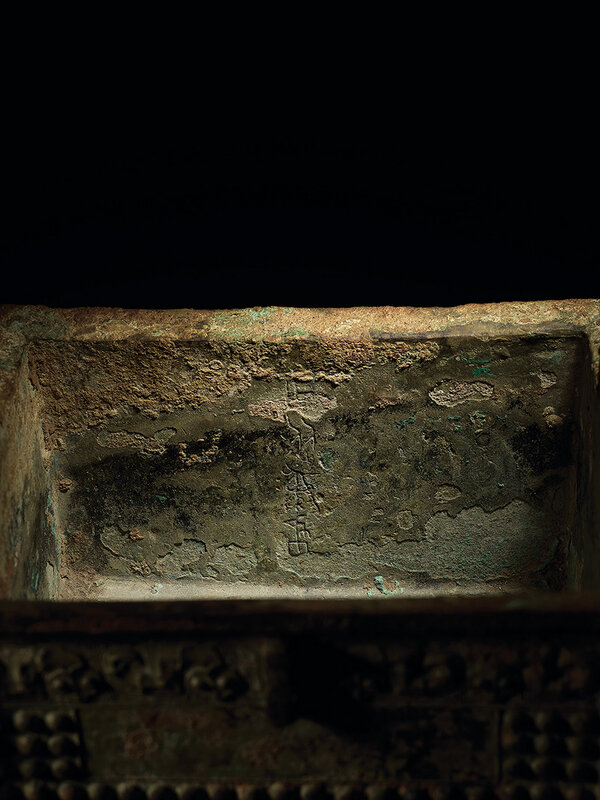






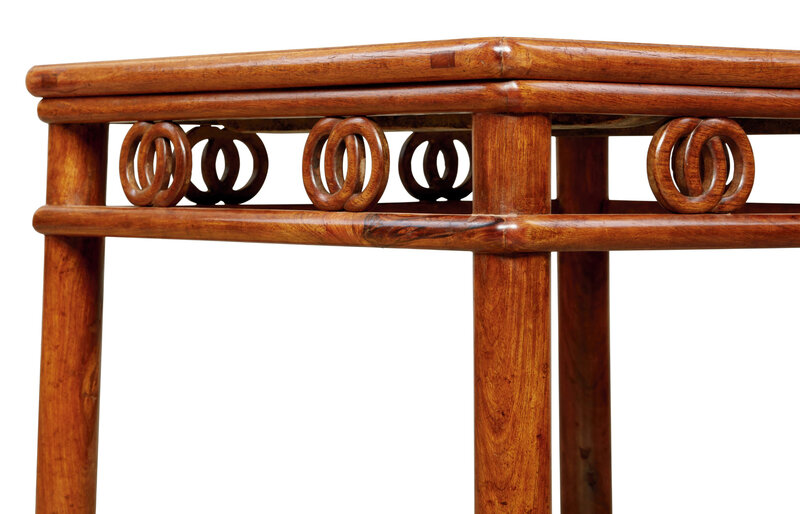


/image%2F1371349%2F20240416%2Fob_2a8420_437713933-1652609748842371-16764302136.jpg)
/image%2F1371349%2F20240414%2Fob_83ee65_2024-nyr-22642-0954-000-a-blue-and-whi.jpg)
/image%2F1371349%2F20240414%2Fob_15808c_2024-nyr-22642-0953-000-a-blue-and-whi.jpg)
/image%2F1371349%2F20240414%2Fob_e54295_2024-nyr-22642-0952-000-a-rare-blue-an.jpg)